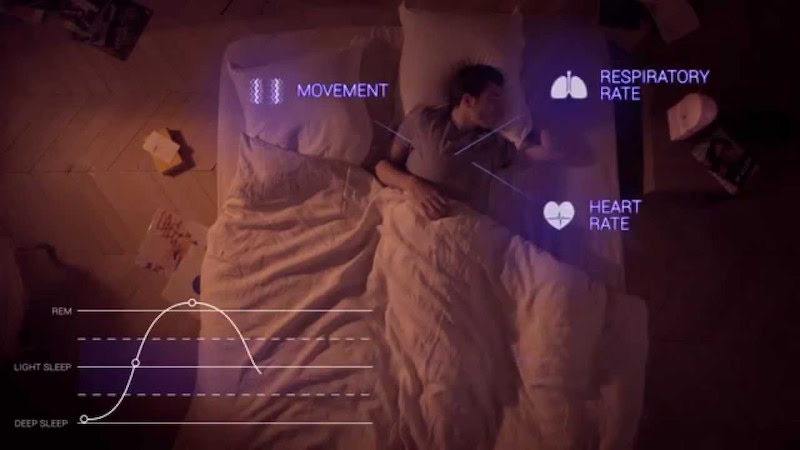|
|
|
|


While there are numerous devices today for monitoring sleep it may surprise you to learn just how advanced they have become. Modern sleep monitoring started with humble beginnings by making use of limited sensors on smartwatches and smartphones. Today’s bed mounted sleep monitors are recording heart rate, respiration, room temperature, humidity, lighting and noise levels to help maximize deep sleep. These devices will also wake you at the lightest stage in your sleep cycle (within 30 minutes of alarm set time).
There is some interesting information that can be abstracted from next generation sleep monitoring:
- resting heart rate – indicator of stress levels and physical recovery
- room temperature – 65-72F is optimal, sleeping in a warm outside these temps may result in a lower quality of sleep.
- room lighting – higher lumens generally means less deep sleep
- sound levels – determine when things go bump in the night
- relative comparisons against other sleepers – quality of rest and environment settings
- food / alcohol / exercise – optimization suggestions ( eat earlier, eat less, drink less, etc.)

Feature comparison of the top five most expensive sleep monitors:

Here are the top five most expensive sleep systems that are gathering more data by getting under your covers.
- Withings Aura ($300) – full featured device with high speaker, spotify ready, sleep music and significant lighting. Full monitoring including REM sleep graphs and app. This might be the ultimate in bedside alarm clock.
- Sleepace Smart Sleep System – ($279) – RestOn is the sensor strap that slides under your fitted sheet. Nox is the WiFi enabled base station that sits on your bedside table. This device also has full medical grade sensors and will even count the numbers of times you roll over. It is only available for pre-order today.
- Eight ($249) – A smart mattress that seems to embody SkyNet. This monitor is “chatty”. Eight will confirm that your alarm clock is set and adjust your Nest thermostat upon going to bed. This device will also make associations with activity trackers about exercise and eating habits that might be affecting your sleep. Intense, right? Eight will even adjust the mattress cover temperature (split halves for two people) for optimum sleep. Plus is it does all the usual sensing and graphs. Pre-order only.
- Beddit Smart 2.0 ($139) – Strap goes below the bottom sheet and communicates with a smartphone app. Beddit is minimal. This provides more body data than a smartwatch, but less feature rich than the other models in this list.
- Sense ($129) – The Sense is little less traditional in that it is not just gather and reporting data, but it is actively making suggestions for a better night’s rest and comparing your data with other Sense users. It offers a lot of features for the price point.
While it is questionable how accurate these monitors are it is certainly interesting from a DIY perspective. Using sensors to record things like temperature, light, noise and heart rate are ideal projects for any level of electronics enthusiast. I’m surprised there have not been more arduino and raspberry pi projects for the purpose of sleep hacking.
|
|
|
| |